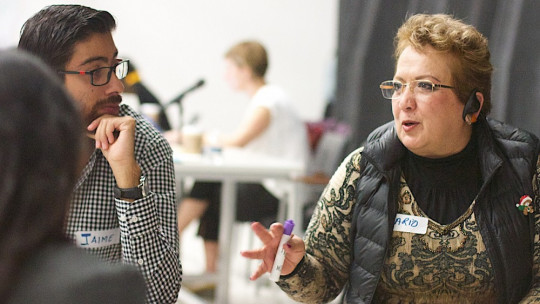The most extroverted people know that, when it comes to interacting with others, in most cases the least important thing is to have a planned topic of conversation. It’s more; Sometimes the simple act of trying to stick to a script causes the dialogue to not be completely fluid, and to get stuck due to a lot of awkward silences.
However, for most people, talking without having a defined message in mind is something strange, difficult to carry out. Seen from a certain perspective, it may seem uninteresting to interact like this, but on other occasions it is a very valuable resource: starting conversations easily has many advantages in certain contexts. In this article we will review a series of tips on how to start a conversation without having a specific topic
How to start a conversation without a topic
We must keep in mind that, when we start to think about what a conversation is, we tend not to think exactly about the real dialogues that occur in our daily lives. Instead, we think more of screenplay or novel dialogues, exchanges of opinions that aim, in most cases, to create a clear account of what is happening, to show exchanges of ideas that are coherent.
But in real life, most conversations are full of imperfections. For example, There are redundant expressions, going around in circles, and many, many changes of subject This doesn’t have to be bad; It is a reflection of the dynamic character of the human mind, and in fact, when they occur, we usually do not notice these imperfections.
Well then; When starting a conversation without having a defined topic prepared, we can exploit this principle on which most conversations are based. The content does not matter as much as the form Let’s see how to do it.
1. Don’t be afraid to make a fool of yourself
The fact that it is not necessary to have a topic of conversation to start talking to someone does not make the first impression of little importance. Therefore, whatever you do, you must do something that does not make you seem vulnerable or that makes you feel prey to the feeling of ridicule. Any action, no matter how bizarre, has a good chance of not seeming so. if it is clear that you are doing exactly what you want to do
Of course, you must be clear that starting a conversation without having planned a topic is always, to a greater or lesser extent, a challenge, which will require you to leave your comfort zone. Anyone who talks about a topic they know a lot about will feel safe, but jumping right into talking, changing topics, should flow with the conversation and that requires adaptation.
To start a conversation with someone you know little or nothing about, it is good to aim for a topic linked to a fact that you both know. If you’re talking about a movie, you won’t know if the other person will catch the reference, but if you’re talking about something that’s nearby, yes.
For example, you can comment on a visual element that caught your attention. This comment, as long as it is not rude, is a good start, since although it is clear that it will not be the backbone of the conversation (it is not enough to talk so much) part of something that sender and receiver can notice assuming they are in the same space or seeing the same thing.
3. Ask simple questions
So that it is not a monologue, ask simple questions that refer to experiences, for example. In this way, a range of different topics will open before you that you can choose depending on how interesting they are.
4. Talking about everyday life is not a sin
There is nothing wrong with talking about the small details of everyday life. For example, the impression that a certain neighborhood gives us, the type of food we like… In the end, if all conversation were about very abstract topics, life would be very boring. Besides, Talking about this makes it very easy to change the subject and create stories that the other person can identify with
5. Adapt to their non-verbal language
This is a little trick that will help you make the other person feel more comfortable. Start from the reference of the non-verbal language that it expresses, and imitate it If you see that it is one that expresses a defensive attitude, imitate it but taking it towards another similar one that is less tense, less hostile. Unconsciously, he will also imitate you, until you are both in a much more relaxed posture and non-verbal language style.
6. Train
None of this will make sense if you assume that by reading a series of instructions you will have already learned how to do it. Take those ideas as a reference, and carry them out in your daily life. Repetition creates skill.










